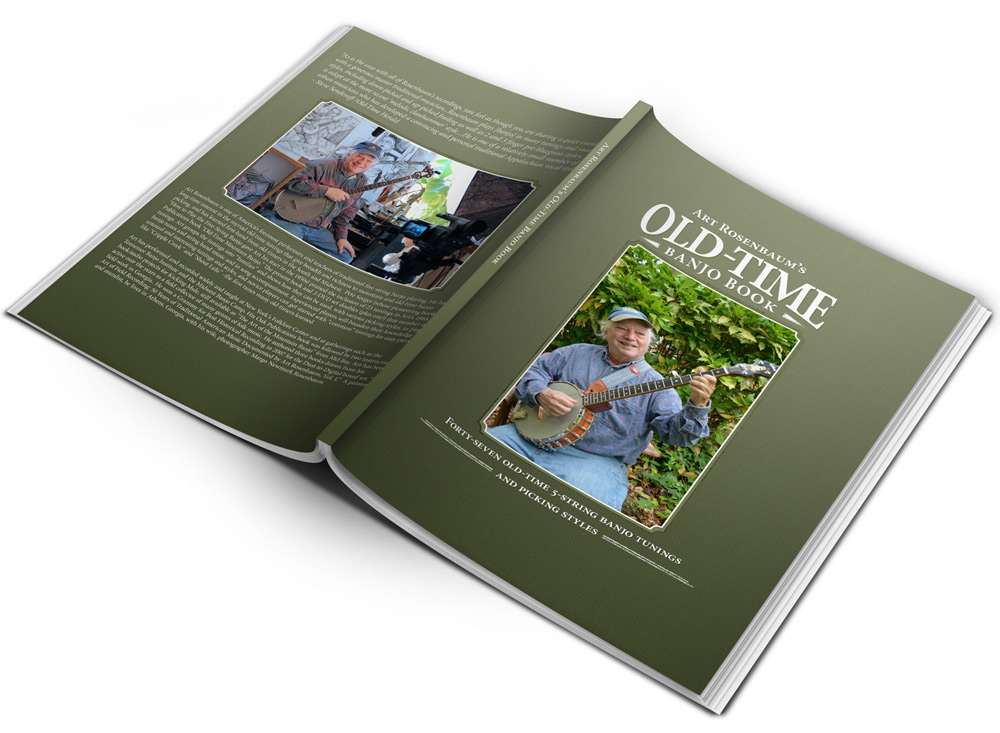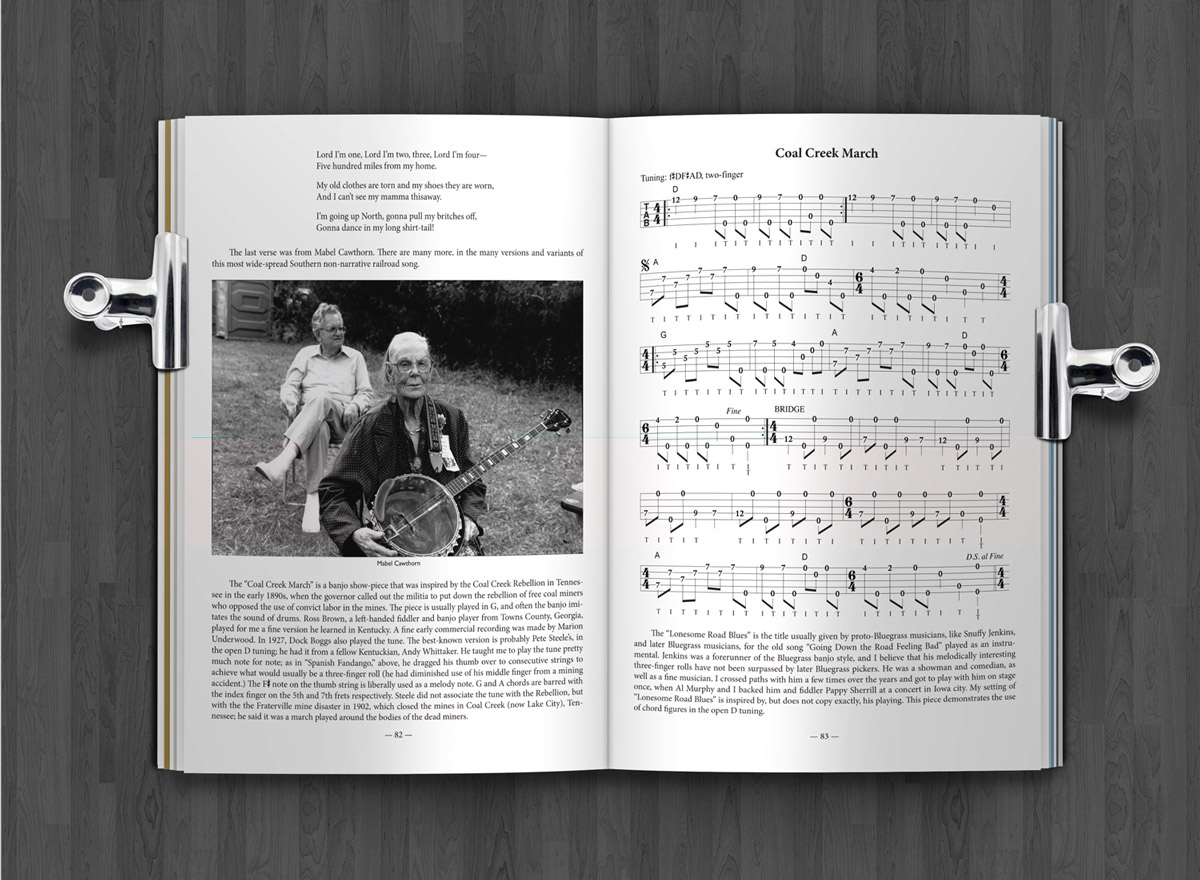Press
Banjo Newsletter Review
Art Rosenbaum’s “Old-Time Banjo Book” is a terrific project that deserves to be in the library of every banjo picker from beginners to professionals. Not only does it offer a great repertoire of interesting tunes and painstakingly introduce the student to dozens of cool and unusual banjo tunings, but it also offers what amounts to a survey course of traditional banjo-picking styles. Straight clawhammer and drop-thumb clawhammer are represented of course, but so is “overhand” (a clawhammer variant), Seeger-style up-picking, thumblead 2-finger picking, index-lead 2-finger picking, several variants of 3-finger picking, along with several hybrids.
To put this work into perspective, it very thoroughly and effectively covers an important area of banjo playing which has hitherto been left virtually untouched by the field of old-time banjo instruction. Most old-time banjo playing these days – melodic, round-peak, or “festival”-style – is fundamentally fiddle-centric. Melodic pickers try to play fiddle-tunes note for note; round-peak specialists play fiddle tune versions that complement what the fiddle plays without duplicating it; festival stylists catch the important notes of fiddle tunes and fill in with drone notes.
In this type of playing the artist creates an “atmosphere” through a combination of banjo-tuning and picking style that offers exactly the right setting for the performance of a particular traditional song, and that blends perfectly with the singer’s voice.
But there is another stream of old-time banjo playing that has been bypassed by all this fiddle frenzy, which is fundamentally banjo-centric. This is the musical world once inhabited by what Art refers to as the great “banjo songsters” – artists like Clarence “Tom” Ashley, Dock Boggs, Roscoe Holcomb, Buell Kazee, Bascomb Lunsford, Uncle John Patterson, Frank Proffitt, Hobart Smith, and Pete Steele. In this type of playing the artist creates an “atmosphere” through a combination of banjo-tuning and picking style that offers exactly the right setting for the performance of a particular traditional song, and that blends perfectly with the singer’s voice. Art refers to this marriage of instrument and vocal performance as a “wonderful synergy,” and reminds us that Roscoe Holcomb once said that he knew “three hundred tunes on banjo and (sang) every one of them.” It is this banjocentric world of old-time picking that is the primary focus of “Art Rosenbaum’s Old-Time Banjo Book. ”
Art loosely organizes the 47 featured banjo tunings by key, in order to minimize retuning between adjacent tablatures. He presents more than half a dozen G tunings, half a dozen C tunings, and a whole slew of D tunings, not to mention various E-minor tunings, G-minor tunings, and F tunings. You’ll learn Little Birdie tuning, Last Chance tuning, Sandy River Belle tuning, Cumberland Gap tuning, Darlin’ Corey tuning, and Willie Moore tuning; not to mention a couple of Dock Boggs’ tunings and a few variants of the famous Sawmill tuning.
On the two companion dvds (each two hours long), Art painstakingly shows you how to get in and out of all these various tunings. Along the way, he illustrates all the songs in the book; and I have to say that these “illustrations”- actually full-out performances of the material, including Art’s great traditional style singing – are worth far more than the project price just by themselves. In effect, these four hours of video represent a tour de force, where Art displays his mastery of the styles of literally dozens of banjo songsters. This is all the more remarkable when you stop to consider that each of the original songsters only had to master a single style (namely their own … ). It literally represents the crowning achievement of a lifetime spent studying traditional music in general, and traditional banjo playing in particular. – Ken Perlman



